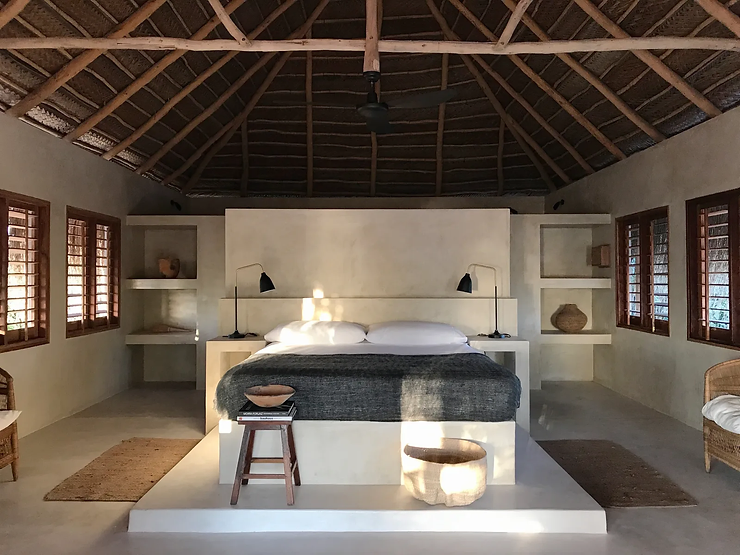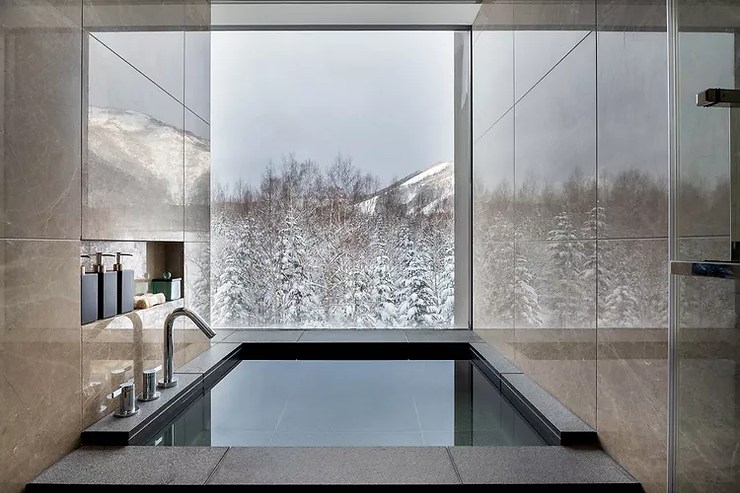In recent years, the hospitality industry has experienced a transformative shift in its approach to wellness. Gone are the days when aesthetically pleasing, Instagram-able spaces were the sole focus. Today, the concept of wellness in hotels and hospitality has evolved to encompass a holistic approach to guests’ well-being. This shift has led to new challenges and opportunities, as Designers strive to integrate all facets of wellness into these spaces, crafting impactful environments that engage all the senses, and ultimately providing an enriching experience.
The Changing Landscape of Wellness in Hospitality

© ASTORIA- Drake+Khan Design
As the understanding of wellness expands, so do the expectations of guests. Today’s travellers not only seek a comfortable place to rest but also an environment that nourishes their physical, mental, and emotional well-being. This has resulted in a broader understanding of a guest’s expectations that encompass elements such as sustainability, nature immersion, mindfulness, and community engagement.
Integrating Wellness into All Facets of Hospitality Design

© Jim Stephenson / Newt Hotel, Somerset/ Invisible Studio
To create truly human-centric spaces, Designers must integrate elements that cater to all aspects of well-being. This is driven by a growing recognition that spaces should encompass a holistic approach to well-being. Such an approach involves meticulously crafted room layouts that foster relaxation and restful sleep, as well as the use of natural materials that establish a tangible connection between guests and the natural world. To accomplish this, Designers are incorporating biophilic design principles, seamlessly weaving nature into the fabric of their designs.
Additionally, the modern hospitality industry has witnessed a shift in amenities within hotels. These now include yoga studios, meditation spaces, state-of-the-art fitness centers, and menus offering healthy dining options. Beyond the confines of the building itself, the inclusion of green spaces, rooftop gardens, and winding walking paths invites guests to experience the therapeutic benefits of nature even within bustling urban settings. In this holistic approach to hospitality design, the fusion of well-being elements with aesthetic and functional considerations has become paramount in creating spaces that cater to the physical, mental, and emotional needs of the modern traveler.
Building Stories Through Materials

© Sussurro, Mozambique / EDVINAS
Materials play a crucial role in the wellness design journey of a hotel. Natural, sustainable, and locally sourced materials not only create an inviting and warm ambiance but also contribute to the well-being of both guests and the surrounding community. Using materials that tell a story, whether through cultural significance or historical relevance, adds a layer of authenticity and depth to the overall guest experience.
Diving into Sensorial Elements
Engaging all the senses is a fundamental aspect of wellness and well-being design. Designers are now exploring ways to create sensorial experiences that go beyond visual aesthetics. This may include incorporating soothing sounds, calming scents, and tactile textures that evoke a sense of comfort and tranquility. By doing so, hotels can elevate the guest experience and provide a multi-dimensional approach to relaxation and rejuvenation.
The Importance of Bathrooms in Wellness-Oriented Stays

© Aaaron Jamieson Photography / Higashiyama Niseko Village, Japan / Duoz Design
While public spaces have traditionally been the focus of hotel design, wellness-driven hotels are now emphasizing bathrooms equally. Bathrooms are no longer merely functional spaces but are considered private sanctuaries for guests to unwind and recharge. Integrating elements such as spa-like fixtures, ambient lighting, and natural materials in bathrooms can enhance the overall wellness experience during a guest’s stay.
The Divergent Path of Wellness Design
While the wellness and well-being design journey is well underway, it is important to recognize that there is no one-size-fits-all approach. Each guest is unique, and their wellness needs may differ significantly. As a result, hotels are increasingly focusing on customizing guest experiences to cater to individual preferences, while still fostering a sense of community through shared wellness spaces and activities.
Conclusion
As the hospitality industry continues to evolve, the integration of wellness into hotel design has become a priority for both designers and guests. Creating impactful spaces that promote well-being and engage all the senses is now at the core of hospitality experiences. By embracing a holistic approach and incorporating wellness touchpoints throughout every facet of design, hotels can create meaningful and enriching stays for their guests. Whether it’s through sustainable materials, sensorial elements, or personalized experiences, the future of wellness in the hospitality industry lies in creating spaces that nurture and inspire guests on their journey to well-being.